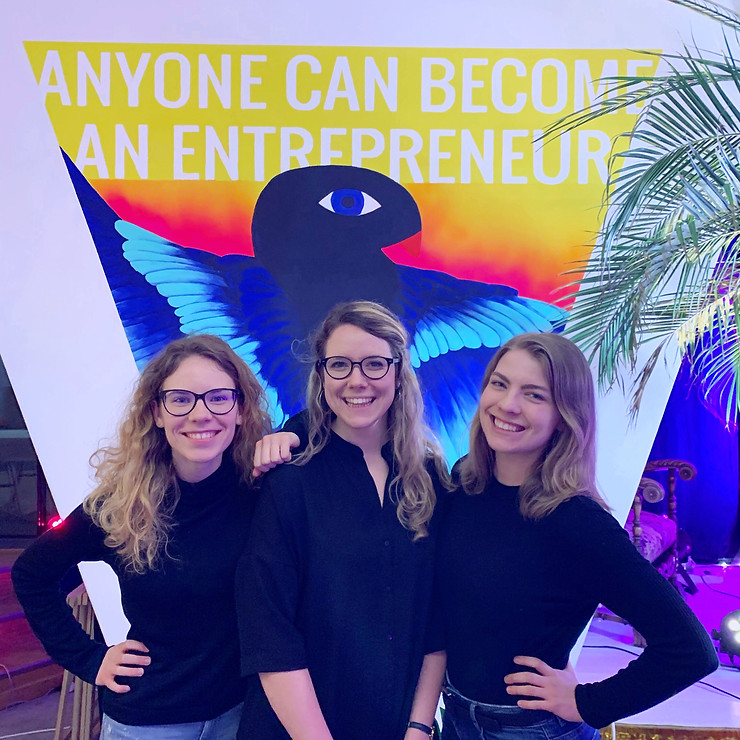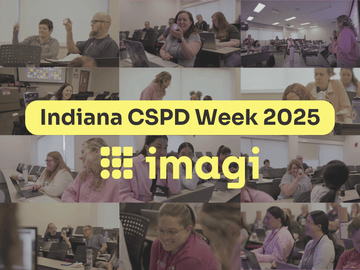Remember the movie Legally Blonde? All I wanted at 14 years old was to be just like Elle Woods. She was strong, intelligent, independent, and unforgiving of her feminine traits.

Reese Witherspoon as Elle Woods in Legally Blonde. Source: Google Images
In the movie, she changes her shopaholic and socialite ways to become a harvard-educated lawyer. It’s amazing, and if you haven’t seen it you need to netflix it pronto! However, I now realize the push it gave me to pick a social science based education path. I became so inspired to one-day become a high powered lawyer/business woman/activist just like Elle.
Being 14 was awesome but also extremely tough. It is such a critical time in a young person’s life as you are not only starting to become a young adult, but you also start to take on the responsibilities that come with adulthood. Picking your education path is one of those responsibilities, and it’s a huge decision that teenagers aren’t supported enough in.
When I was 14 years old, science and math were the opposite of cool to me — even if I thought they could be really fun at times. Like most kids, I had always had an interest in the mindblowing science experiments you did at school and the challenging math equations you could solve after a bit of practice and guidance.

13 year old me. Cheerleading at an American football game.
However, this spark was abandoned. There were never any applications of science and math to my everyday life as a teenage girl. 14 year old me could not see how these subjects would go on to benefit me later in life. But beyond that, I was never exposed to any female role models in STEM who showed me how genuinely cool it was to work with science or math or technology.
I wish there had been a role model in my life to showcase the amazing power of STEM to me. In fact, I vividly remember when I was 14 as a young freshman and thought it was so crazy my highschool had a robotics team and the public school district was going to open a separate high school just for teens who wanted to specialize in STEM, similar to the International Baccalaureate (IB) program. Sure, I thought robots were cool but it was only nerdy guys on the robotics team and no one really cared that they did well in state competitions. At 14, I was so worried about fitting in that I would never have done that kind of social damage by getting into coding and robotics.
It’s sad but it’s true.
I was in my own bubble, surrounded by my friends, none of whom had an interest in STEM even though many of them had parents working in tech. We loved to shop, talk for hours about boys, and watch reality television like Jersey Shore. It was no one’s fault, but we were all actively contributing to perpetuating the stereotype of how uncool it was to like math and science. You would be a nerd.
Hanging out with friends when I was 14.

There are so many reasons for the lack of women in STEM. Personally, I strongly feel that I was never encouraged to pursue STEM in education or as a future career. Girls were encouraged to become nurses, marketers, and teachers. We were never encouraged to become physicists, computer scientists, or engineers even. We were sorted into these different paths by our educators, parents, and friends before we could fully comprehend what we wanted to do with our own life. Before we could even explore all of the paths that life has to offer for education and work.
Now, I wonder: What if I would have been exposed to female STEM role models when I was a teenager? What if Elle Woods had been a front-end developer? What if she had been a hardware engineer? What if she had been a data scientist? She could have kicked Warren’s butt at MIT and shown him that girls can code too. Elle could have developed a device that scanned her mood and closet to pick out her outfit for her like in the movie Clueless. Elle could have created an online platform to sell her and other students’ old school literature. Elle could have been a pro at tracking website analytics through her new Apple computer she bought and could have created an algorithm to automatically post to her blog on her behalf. Elle could have done many things relating to STEM.
Imagine a movie that would have given us girls the role model we needed toshow us that STEM fields aren’t just for guys or “nerds” (and by the way — nerds are cool! It is so cool to be passionate about a subject and to love math and science).
Don’t get me wrong — I still love the movie and it conquers some major feminist plot lines. Yes, Elle kicked butt and proved to her ex-boyfriend that she was smart and graduated at the top of her class from Harvard Law. However, throughout it she realizes that she’s proving her own potential for the wrong reasons. She fights back against an inappropriate teacher and random people commenting on her appearance and the way she dresses, while overcoming her own need for external validation in the pursuit of winning back a guy who doesn’t deserve her. She also showcases how you can still be feminine and smart. It’s ok to like girly things while also liking things that aren’t traditionally classified as “girly.”
Source: Alex Sautter from Giphy
Elle Woods was the type of role model I needed when I was 14. She was strong, feminine, cool and broke barriers of typical stereotypes.
So what’s my point with all of this?
When I first met Dori from imagiLabs, I instantly connected to the mission of empowering girls to get into tech. I was so inspired by her and Beatrice’s technical backgrounds and their blossoming entrepreneurial journey into creating an actual solution to conquer this problem. This was a solution that I would have loved as a teenage girl, because it can be directly applied with everything that is important to a girl of this age. You can personalize it however you want — with code. If you want to show people that day that you’re happy, code an emoticon onto the charm. You can code a special heart every time your best friend texts you. You can even code the charm’s LEDs to dance to the beat of your favorite song. The opportunities are endless, and it’s all because of code.

I realized that if no one else is going to try to tackle the problem of girls having a lack of interest in tech, then we could. imagiLabs could. We could be the role models these girls need. We needed young women to showcase all of the amazing use cases of technology and how an education in STEM could lead to you developing or contributing to awesome technology yourself. So we became those young women.
I was isolated from female STEM role models because I fell outside of the circle of girls who kept their STEM interest throughout their teenage years. We need female STEM role models that all girls see. We need a solution that all girls can use in their daily life. We need technology for all girls.
Technology needs to be shaped by women just as much as men, because technology is the future. And the imagiLabs team won’t stop until we have changed how the whole world views women in tech.

imagiLabs is building tools and a community to inspire, educate and funnel the next generation of female technologists. We build hardware that is customisable through coding to spark the interest of teenage girls and a mobile platform that teaches programming and enables girls to connect over their interest for creative coding. Our first product, the imagiCharm, is a programmable accessory with an embedded LED matrix that can be used as a keychain, or attached to backpacks, or even worn as a badge.
This article was written by Alexa Edström, Marketing & Growth Manager at imagiLabs





